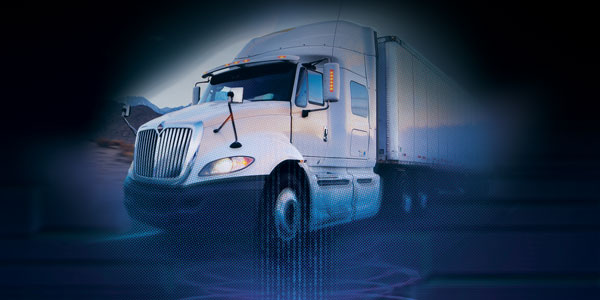Ask our sources: Anytime you get me talking about the latest truck technology, the conversation tends to spiral out of control. Like a mad scientist hopped up on the promise of increased truck efficiency and productivity, I start diving down the application rabbit holes: Can it do this? When will it do that? It makes for a long interview. Of course, I can’t cram that all onto the print page, but this is the Internet—anything goes! So here’s all the info I wanted to include in the story, but ran out of space.
Editor’s note: If you haven’t already read the story, click here for a primer on how to start integrating your truck data dashboards.
How does truck data sharing actually happen? What does it look like?
“As the process of data-sharing continues to evolve, so will the process of how is it maintained and managed. The trucking industry should start considering data as a shared resource to enable solutions. For integration to occur today, the data needs to be exported as a flat file [i.e. .csv] from the source system and imported by the receiving system or provided through database-to-database or token-secured API connections. Once the data is available in the receiving system, then the dashboards can be modified to include the new information.”
–Phil Wade, director of technology, Bridgestone Americas
‘Data lake’ is the latest buzzword, but what is it, and how do I build my own?
“Data lake” is simply the metaphor the industry is using to describe the massive amount of data that’s pouring off of today’s trucks. The idea is that all the data is pulled off and stored in this “lake” and you can start siphoning data out to power software solutions like efficiency and productivity dashboards as well as maintenance management software.
“In general, the easiest way to get started with integrating data into a single dashboard is to start with pushing your data into a single data lake: a big data environment where you can push all requisite data that can be pulled for creating your dashboards that can operate at scale. Google BigQuery is one example of this. Geotab is launching its Data Science Package, which provides our larger customers with their very own ready-made data lake. Once you have your data from multiple providers in a single area, you can use open source or paid tools to create dashboards on top of these datasets. Examples of such tools might include re:dash (an open-source alternative), Tableau, Power BI, Google Data Studio, etc.”
— Mike Branch, Geotab vice president of data and analytics
Should I be coding my own, proprietary truck data dashboard?
Like all things in the fleet world, there’s no answer that will satisfy everyone. But consider that software providers are coding flexible, secure dashboards with the future in mind. Why re-invent the wheel?
“We recommend expanding your search beyond a custom coded dashboard, or one created by a manufacturer with a singular focus on their components. Your dashboard should be designed with an eye toward supporting integration with other dashboards. In general, you should start with nonproprietary architecture that is capable of supporting various integration techniques and strategies, such as I-frames and single sign-on. The creator of the dashboard should be reputable in the industry and have a broad understanding of the trucking industry to help integrate datasets and portals from a variety of sources.”
— Dave Covington, Noregon’s chief technology officer
Fun technology quip: ‘Putting garbage in will produce garbage out.’ How does that relate to truck data?
“It’s widely known that some data sets are not usable because they’re so poorly maintained or could be varying from one OEM to the next, and we need to account for that. One specific example of data that could be misinterpreted is the fuel tank level. For example, if a truck is parked on a hill, you’ll get a much different read on fuel tank level data than if the truck were on level ground, leading to a potentially inaccurate piece of data. Fleets can do some simple checks to look for outliers or out of range values in their data. For example: Is there more “over RPM” time clocked than total engine time? Or is a truck reporting that it got 30 miles per gallon? Those are easy data points to rule out as inaccurate, and it’s worth having a dedicated resource or solution in place to keep that data clean.”
— Carl Robinson, vice president of Vusion, a Trimble Company
Don’t engines throw proprietary codes? How can those be integrated into a dashboard that isn’t the OEM’s?
“There are proprietary codes, but most of the codes are standardized because of the heavy-duty OBD standards. Those are what really cause trucks to go down. For instance, a low coolant code, which happens to be the most popular fault code that happens on vehicles, it’s the same across all vehicles. It doesn’t matter, the make or model of your vehicle. A low coolant DTC code is a low coolant DTC code, and you handle it the same way. You want to get it fixed while it’s a hose or a hose clamp issue, which is a few hundred dollars, versus waiting and then finding out that over the course of several months, a driver was putting coolant into the cooling system, but air got into that system, and now there’s an air bubble in an EGR cooler.”
— Andrew Dondlinger, Navistar’s vice president of connected services














